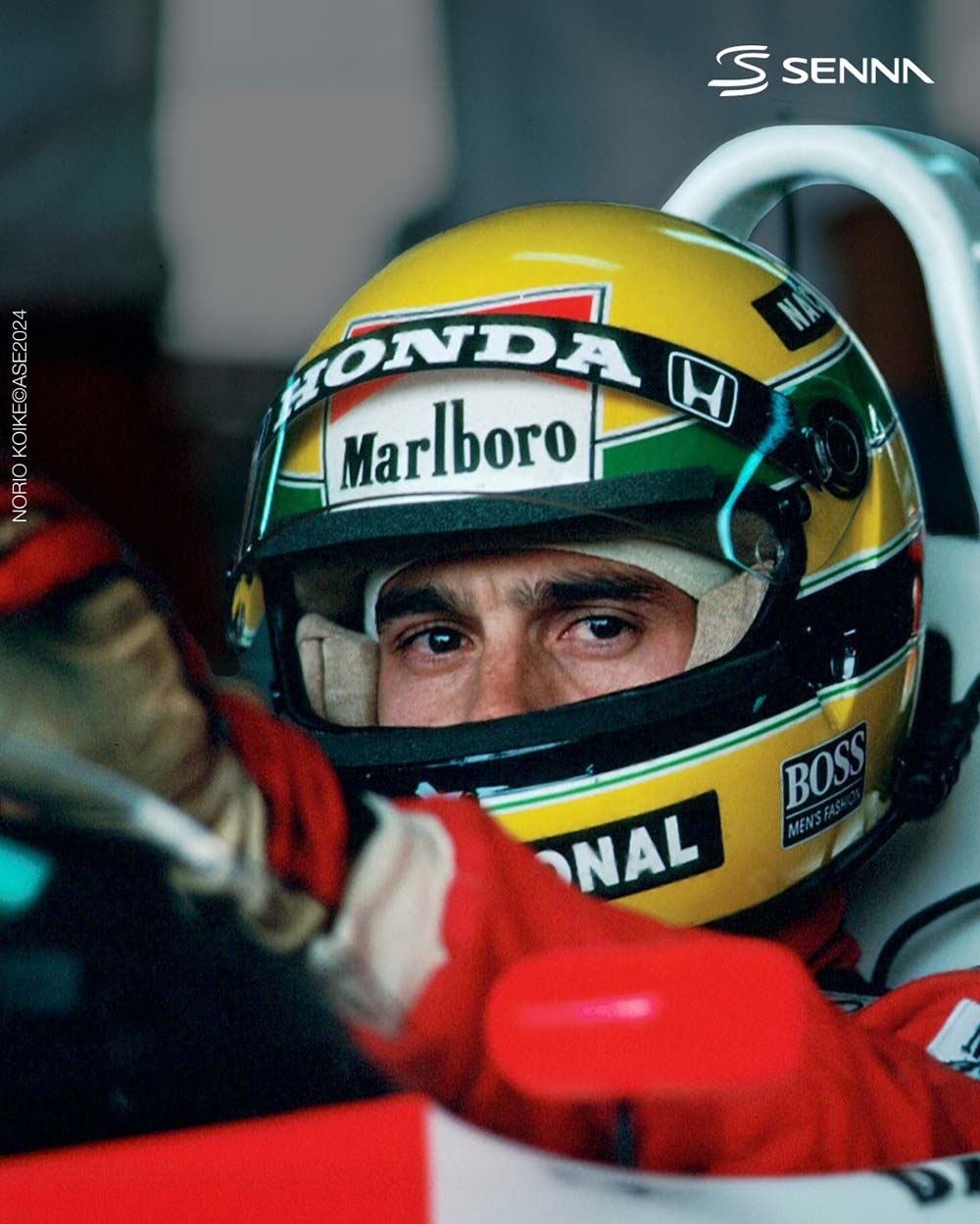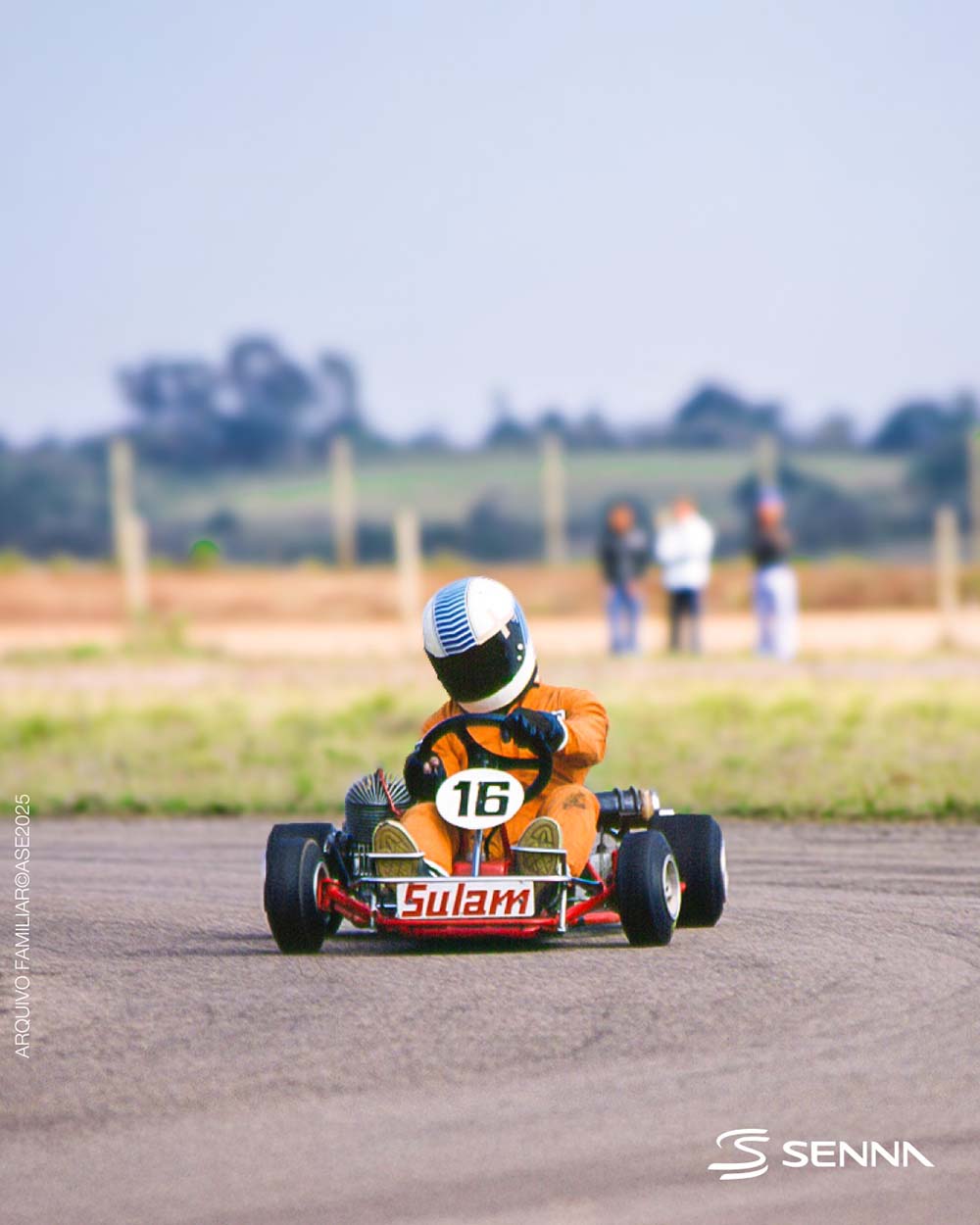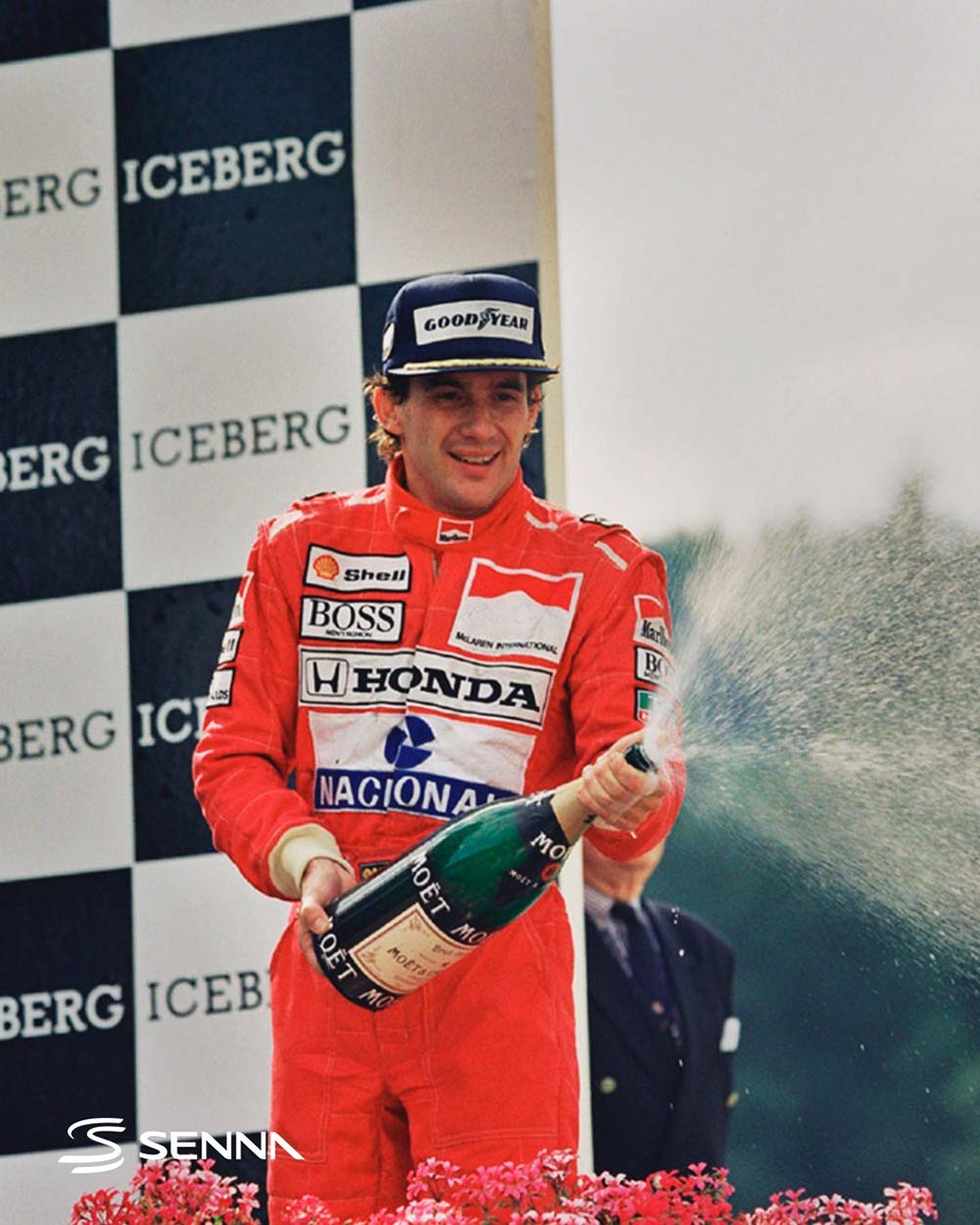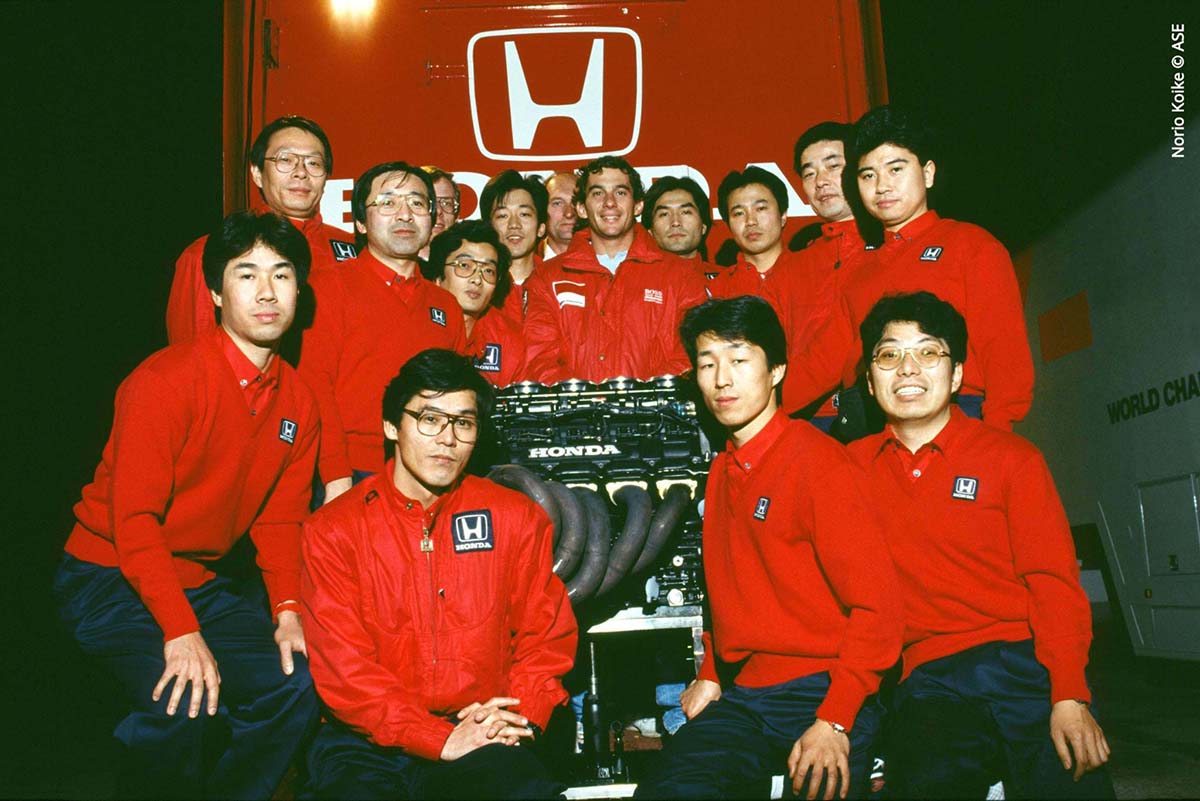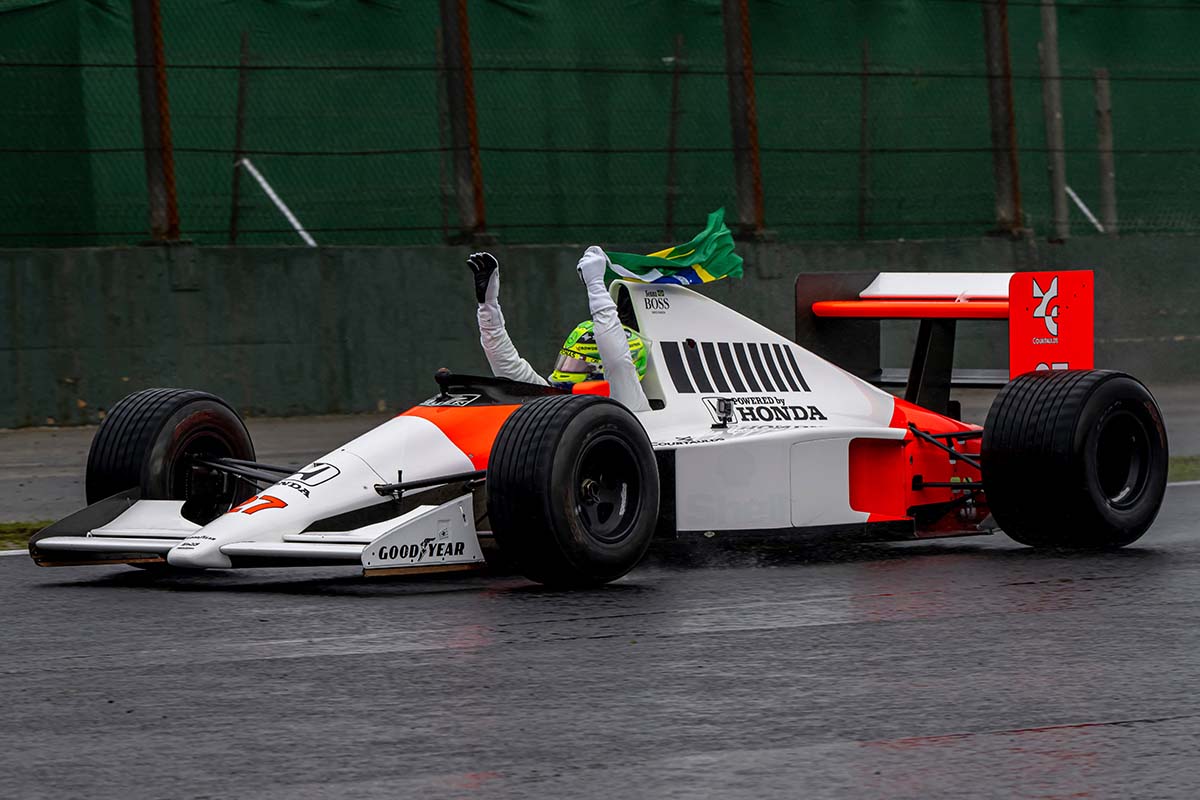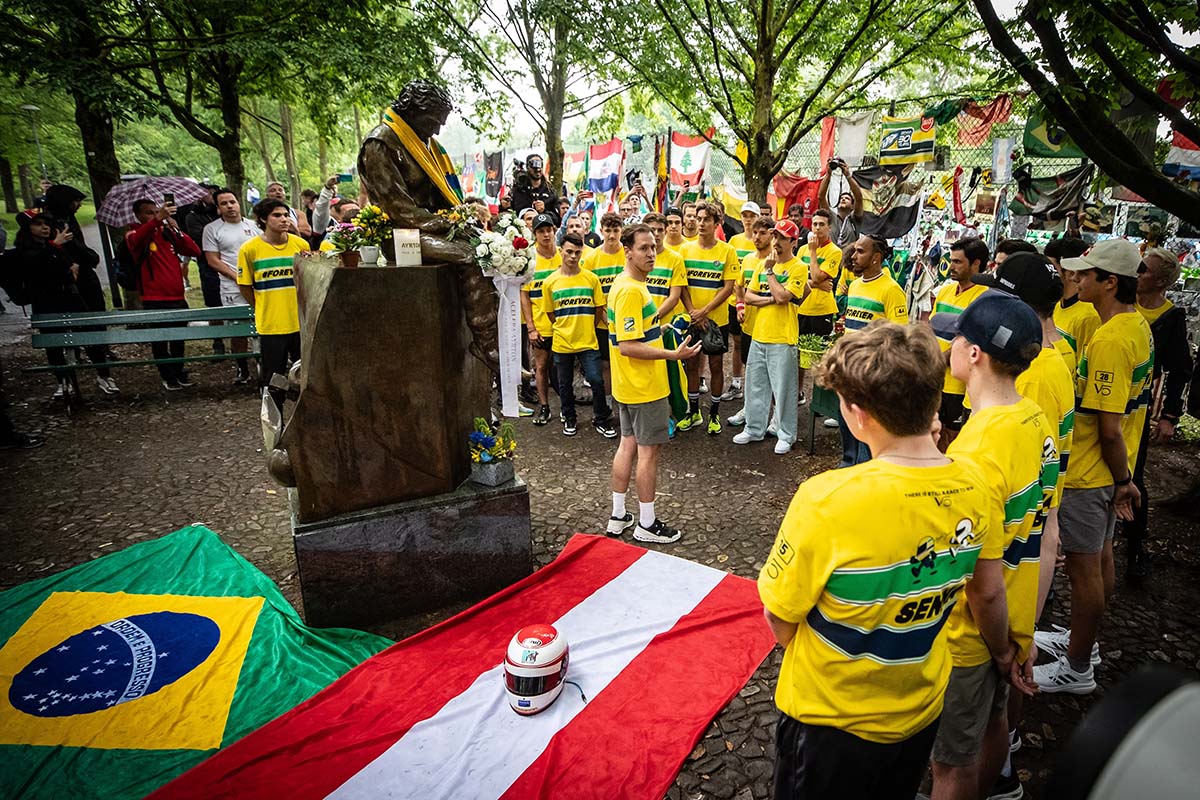Lewis Hamilton, Charles Leclerc, Fernando Alonso — the list goes on. But ask any of them who inspired their journey in Formula 1, and one name echoes louder than the rest: Ayrton Senna.
The Brazilian from São Paulo, a three-time Formula 1 World Champion, remains more than a legend — he’s a symbol of passion, perseverance, and national pride. Every year, when Formula 1 returns to Brazil, Senna’s presence lingers in the air. His name resides in every corner of Interlagos, his spirit rises with the rain, and his legacy ripples through fans, drivers, and teams alike.
A legend is born
From the moment Ayrton Senna gripped a steering wheel, greatness seemed inevitable. Before Formula 1, he’d already conquered karting circuits and junior categories with extraordinary precision — victories at the 1983 Macau Grand Prix Formula Three, the 1982 British Formula Ford 2000, and the 1983 British Formula Three Championship marked him as a prodigy. Even the fearsome Nürburgring — one of motorsport’s most demanding tracks — fell to his mastery at the 1984 Nürburgring Race of Champions, the race that signaled his arrival on the global stage.
Senna made his Formula 1 debut that same year at the 1984 Brazilian Grand Prix with Toleman, showing flashes of brilliance even in underpowered machinery. By 1985, he secured his first Grand Prix victory in Portugal with Team Lotus — a moment that defined the beginning of an era.
His partnership with Honda began in 1987, when the Japanese manufacturer powered Camel Team Lotus. Senna finished third in the championship that season — a preview of what was to come. When he joined McLaren in 1988, Honda came too. It was more than a technical collaboration; it was a bond built on mutual respect and shared ambition.
Eighteen years old, wearing an orange racing suit and helmet in Brazil — a young Senna began the journey that would lead to 41 wins and three World Championships. | Left: © Arquivo Familiar/ASE 2025 | Right: © facebook.com/sennabrasil
That year, Senna claimed his first World Championship title. Together, McLaren, Honda, and Senna would go on to win three Drivers’ Championships and three Constructors’ titles, reshaping the sport’s history.
It all began with one quiet meeting in 1986 — Senna sitting across from Honda’s F1 team manager, sharing his dream of becoming World Champion. His sincerity and determination left a lasting impression. The partnership that followed wasn’t born of contracts — it was built on trust.
The Brazil Grand Prix
The Brazilian Grand Prix isn’t just a race. For many, it’s a pilgrimage — a return to where Senna’s heart always belonged.
In Formula 1, few drivers ever taste the glory of winning at home. Charles Leclerc’s many heartbreaks in Monaco before his 2024 triumph, or Sebastian Vettel’s lone victory in Germany despite a 16-year career, show just how immense that pressure can be. For Ayrton Senna, it was no different. Year after year, mechanical failures, retirements, and disqualifications kept his dream just out of reach.
But in 1991, racing for McLaren-Honda, Senna finally achieved what he longed for most — a home victory. With a failing gearbox, his car barely holding together, he fought through excruciating physical strain to see the checkered flag first. When he crossed the line, he screamed in pure, unfiltered triumph.
The Brazilian crowd erupted. Senna, overcome by muscle cramps and exhaustion, had to be lifted from his car and taken to the podium by the medical team. Yet in that moment — drenched in sweat, pain, and pride — he stood tall. He had done it for Brazil.
That victory wasn’t just a sporting achievement; it was a symbol of endurance, spirit, and an unbreakable bond between a driver and his nation.
Around the globe: from Japan to Brazil
Few partnerships in motorsport history have been as spiritually aligned as Senna and Honda.
Among the countless letters and gifts Senna received from fans, one stood out — a beautifully crafted samurai helmet, sent by a Japanese admirer in 1988, the year he won his first title. For Senna, the samurai represented everything he believed in: discipline, skill, loyalty, and respect.
Those were the same principles that defined his relationship with Honda’s engineers. Between 1987 and 1992, Senna’s collaboration with the Japanese team wasn’t merely technical — it was deeply human. He admired their precision and humility, and they, in turn, were moved by his relentless pursuit of perfection.
Senna won all three of his World Championships in front of the Japanese fans, at the Suzuka Circuit, where his talent and spirit became legend. Decades later, that bond remains.
Nobuhiko Kawamoto, who led Honda’s second F1 era and later became the company’s fourth president, once recalled:
“Staff who were at the F1 scene said Ayrton was really special. Drivers [at that time] were not generally interested in engine data graphs, but he wanted us to show them to him, to explain them to him, and he worked hard to understand the data. He is very intelligent. Then he would have in-depth discussions with our engineers, as an equal. Drivers usually say, ‘This engine is no good,’ but Ayrton would enthusiastically point out which areas could be improved. Engine development accelerated, Ayrton won, and our engineers were happy because of the results. In other words, he was like a development driver for us.”
Senna won all three of his World Championships in front of the Japanese fans, at the Suzuka Circuit, where his talent and spirit became legend. Decades later, that bond remains.
A 2025 survey by Senna Brands, the official licensing company for the three-time Formula 1 champion, revealed that eight out of ten Japanese fans still feel personally connected to his story. Among the younger generation, more than 40% see Senna as a modern symbol of style and inspiration — a remarkable testament to how his legacy transcends eras.
In his final race in Japan with Honda in 1992, Senna carried that respect visibly — placing a Japanese flag on his helmet’s green stripe, a quiet yet powerful tribute to the engineers and nation that helped shape his career.
Senna’s connection to Honda went beyond sport; it was a story of shared identity. Both stood outside the traditional European motorsport powerhouses, and in each other, they found kinship — a meeting of passion, purpose, and perseverance that still defines the legacy of both names.
Tributes and triumphs
Thirty years since his passing, the Formula 1 world continues to honor Ayrton Senna — not as a mere memory, but as a guiding light.
In 2024, Sebastian Vettel returned to Interlagos to lead a tribute — unveiling a giant recycled helmet sculpture in Senna’s colors. That same weekend, Lewis Hamilton took to the track in Senna’s legendary McLaren MP4/5B, the car that carried the Brazilian to his 1990 title. Driving in the rain, Hamilton waved the Brazilian flag to the crowd. In an interview with Formula 1, he reflected, “It’s very, very emotional, naturally. I was just revisiting my childhood as I was watching [Ayrton] race here as a kid. Hearing that sound and… watching him drive here, winning that race, I just couldn’t believe that I just had that chance to do that, and it was really the greatest honour of my career.”
Thirty years since his passing, the Formula 1 world continues to honor Ayrton Senna — not as a mere memory, but as a guiding light.
That same year, McLaren unveiled a Senna-inspired livery for the Monaco Grand Prix, blending yellow, green, and blue — the colors of his iconic helmet. Oscar Piastri also paid his respects with a special tribute helmet, saying, “It was an honour to drive at Monaco in a Senna-inspired helmet and pay tribute to such a role model.” Often called the “King of Monaco” by fans for his six victories at the circuit, Senna’s legacy wasn’t lost on Piastri, who added, “With six wins there, he was iconic at that track, and I’m glad I was able to have a successful weekend racing in his colours.”
The tributes extend beyond McLaren. From Pierre Gasly’s 2020 homage to Hamilton’s 2019 tribute helmet, every gesture echoes the same sentiment — Ayrton Senna wasn’t just a champion; he was the champion who changed the meaning of racing itself.
Senna’s lasting impact: a legacy for a lifetime
Decades after his final lap, Ayrton Senna’s presence still defines Formula 1. His victories with Honda and McLaren set a benchmark not only for performance but for purpose — a reminder that racing, at its core, is about heart.
In Brazil, murals of Senna adorn city walls. In Japan, his spirit still hums in Honda’s engineering halls. Across the world, drivers & fans still speak his name with reverence.
Senna’s words continue to ring through time, but one line feels especially timeless: “No matter what your dream is, you have to dedicate yourself entirely to it.”
That quote continues to inspire generations — fans, engineers, and racers alike. For me, it’s the line that captures who Senna truly was: a man who gave everything for his dream, and in doing so, gave the world something greater — a legacy that endures, beyond the track.

